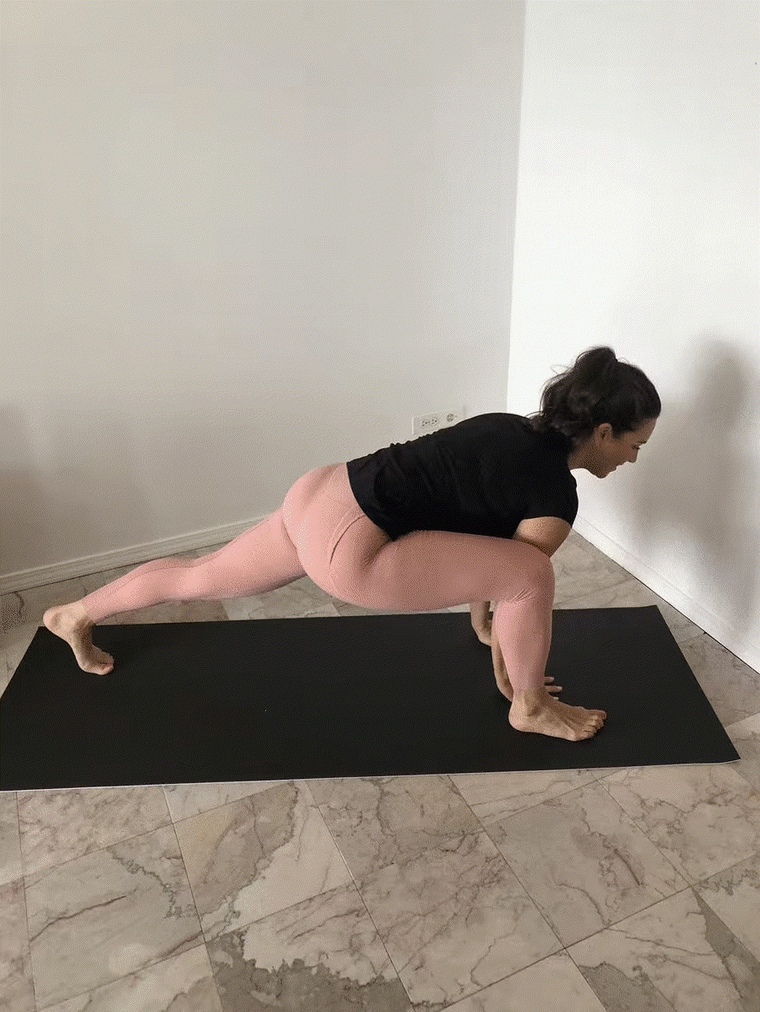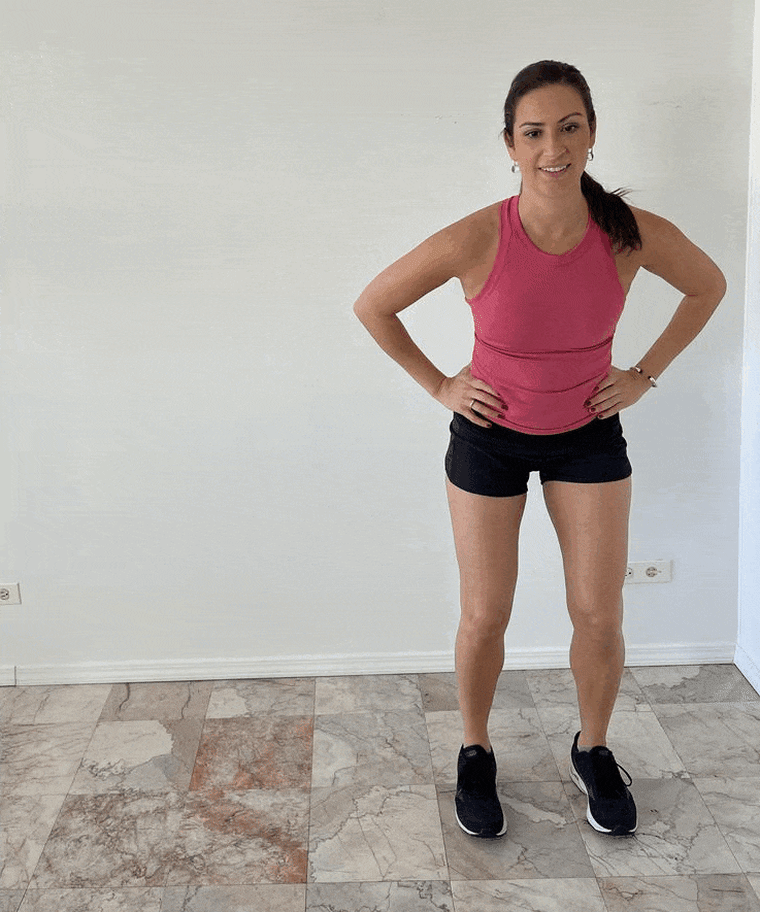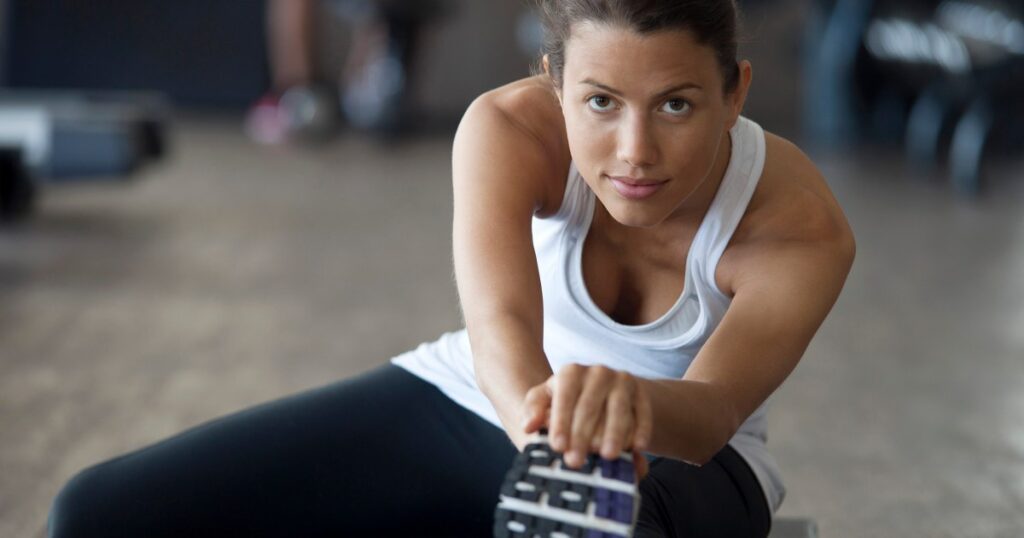Welcome to Start TODAY. Sign up for ourô Start TODAY newsletterô to receive daily inspiration sent to your inbox ã andô join us on Instagram!
We all know the importance of stretching. I encourage all of my clients to stretch before and after their workouts to help prevent muscle soreness and reduce the likelihood of injury ã plus throughout the day to combat the effects of sitting!ô
But while it may seem like a simple movement, thereãs actually some nuance to the type of stretching you should do at different times to optimize the movement.
When it comes to stretching before a workout or first thing in the morning, dynamic stretching is the best choice. This type of stretching, also called active stretching, helps increase blood flow and warm the body up for movement.
Dynamic vs. static stretching
- Dynamic stretching is meant to warm up the body for exercise.
- Static stretching is intended to cool down the body post-workout or relieve tension throughout the day.
What is dynamic stretching?
The purpose of dynamic stretching is to warm up the body before exercise. These stretches are done actively, moving continuously without holding the stretch. When performing these stretches you will move in a full range of motion, which improves mobility and drastically reduces the risk of injury by prepping the body for movement.
How to do dynamic stretching
This is an active movement that usually involves mimicking the type of movement youãre about to do to prepare the joints and muscles for exercise. For example, if youãre gearing up for a walk, fluid stretches that warm up the hip flexors and hamstrings are ideal. For example, taking a step forward with one foot and bending the front knee into a half lunge to stretch the hip flexor, then taking another step forward to stretch the other legãs hip flexor, and repeating for 5 steps, continuously moving while you are stretching.
Benefits of dynamic stretching
Dynamic stretching prepares your muscles and joints for exercise by promoting mobility and by strengthening the muscles and joints within that range of motion.
The active movement done when dynamic stretching can also raise your core temperature and warm up the body, literally. This helps improves circulation, delivering oxygen and nutrients throughout your body quickly and efficiently. As your blood gets pumping, you may feel an energy boost, too!
Dynamic stretching is an excellent tool for minimizing delayed onset muscle soreness or DOMS. Boosting your circulation allows for faster recovery by providing nutrients and oxygen to your muscles. So, fewer days off post-workout!
Dynamic stretch examples
Cat cow
Start on all fours. Your hands should be directly below the shoulders and knees directly under the hips. As you breathe in, arch the back and look up, pressing your tailbone to the ceiling. As you breathe out, press the spine and lower back to the ceiling to round the back and lower your neck, looking down toward the ground. Repeat for 10 ãcatsã and 10 ãcows.ã

Worldãs greatest stretch into hamstring stetch
Start on your hands and knees. Step your right foot forward and bend forward so that the right knee is over the right ankle and you feel a stretch in your left hip flexor. Tuck the left toes under and extend the left leg straight back so that the leg is off of the ground. Place your left hand on the ground inside of the right foot and then twist toward the right, reaching the right hand up toward the sky. Pull the naval in toward the spine and look up at the right hand. Inhale. One the exhale, bring the hand down and shift your butt back toward the left leg so that the right leg straightens and you feel a stretch behind the right leg. Inhale. On the exhale, shift your weight forward again so that the right knee is over the right ankle. Repeat the sequence for 5-10 reps and then switch to the the opposite side.

Ankle circles
Sit on a chair withô good postureô and lift one foot up a few inches off of the ground. Begin moving your foot to the right drawing a circle with your toe. Switch directions, drawing circles to the left. You can also try writing the alphabet with your foot. Complete 10 circles in both directions and then switch feet.

Side lunge
Standing with your feet as wide as your hips, step your right foot out to the right and perform a lunge by sitting back into the right glute. Reach the right glute backward as you keep the left leg straight. Press down through your right heel as you come back to center. Repeat 10 times and then switch sides.

Good mornings
Start with your feet shoulder-width apart, with your hands placed behind your head. Focus on keeping your shoulders back and yourô core musclesô engaged.ô Take a deep breath in and on the exhale, hinge at the hips, bending your chest toward the floor until your body forms an upside-down ãLã shape. You should feel a slightô stretch in your hamstrings. If you feel any pain or uncomfortable pulling, youãve lowered too far!ô Slowly move your torso back up into a standing position on your exhale. Squeeze the glutesô and hamstrings to return to standing tall. Repeat 10 times.
Read the full article here









